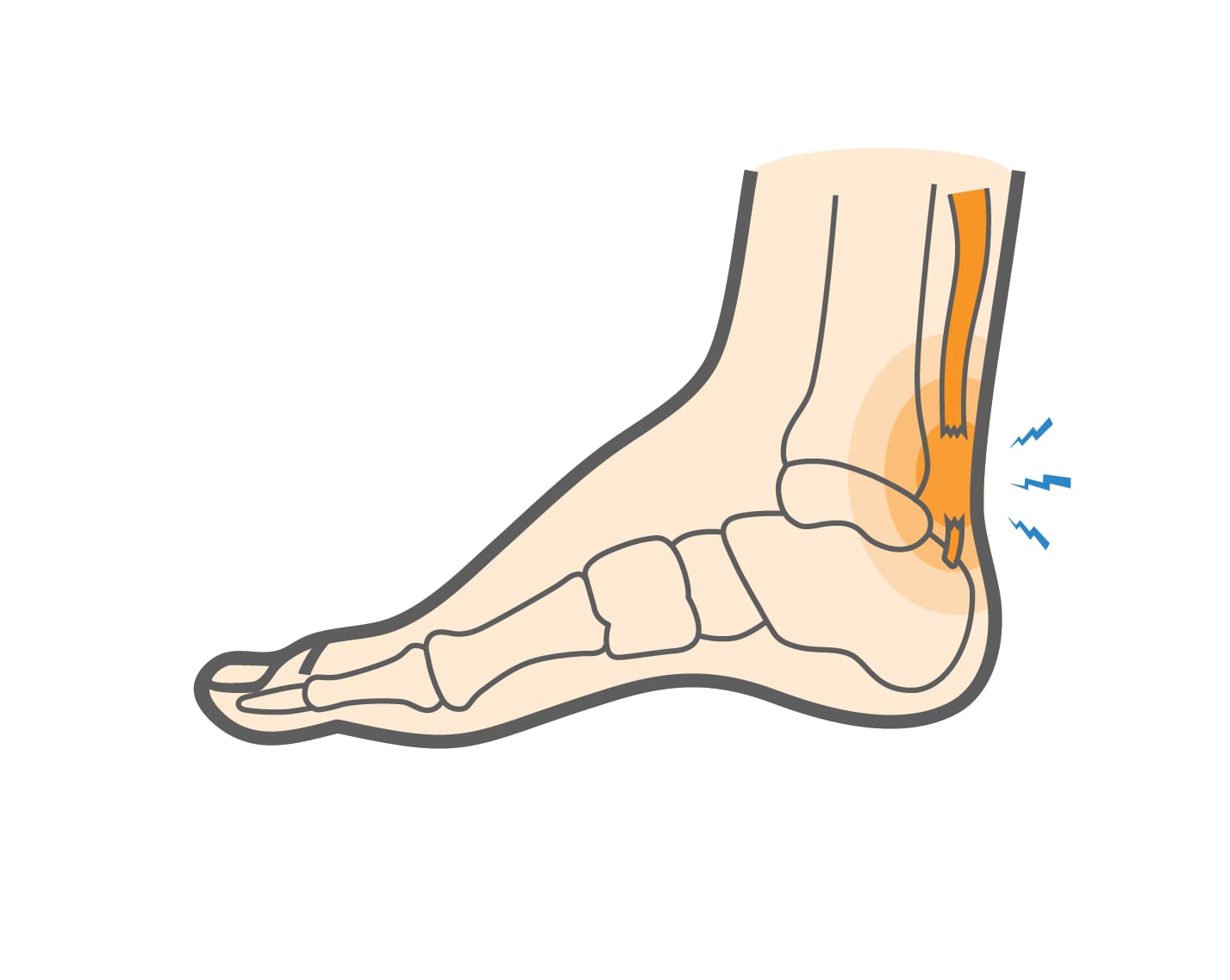The calf has two muscles: the gastrocnemius and the soleus. They meet to form the Achilles tendon, the large fibrous cord that runs down the back of your lower leg. It connects the calf muscles to the heel bone. The Achilles tendon is used for push-off strength, balance, and power while standing, walking, running, and jumping. This tendon can tear, creating pain at the time of the rupture, and then making it difficult to walk or run.
Achilles Tendon Rupture Causes, Symptoms & Treatment
The calf has two muscles: the gastrocnemius and the soleus. They meet to form the Achilles tendon, the large fibrous cord that runs down the back of your lower leg. It connects the calf muscles to the heel bone. The Achilles tendon is used for push-off strength, balance, and power while standing, walking, running, and jumping. This tendon can tear, creating pain at the time of the rupture, and then making it difficult to walk or run.
Overview
Overview

What causes Achilles Tendon Rupture?
An Achilles tendon rupture is associated with forceful muscle contraction at the same time the muscle is being stretched. This injury frequently occurs in athletes who play sports that involve running, jumping, and sudden starts and stops.
Achilles tendon ruptures are most common in these sports:
• Basketball
• Tennis and other racquet sports
• Soccer
• Running
Symptoms
Achilles tendon ruptures can be partial or complete, and come on suddenly. Athletes with this injury find it difficult to push off the injured leg when walking. The most common symptom of an Achilles tendon rupture is pain that is sometimes intense. Other symptoms include:
• Swelling
• Weakness
• Difficulty walking and exercising
When to see a doctor
If you experience an injury associated with a popping sensation in your heel or leg, or if you experience difficulty walking due to pain or weakness during push off, you should see your doctor. During your visit, your doctor will inspect your calf, looking for signs of rupture such as tenderness, swelling, a gap in the tendon, or shortening of the calf. To help make a diagnosis, your doctor may conduct the “Thompson test,” a physical exam in which the patient lies face down with both knees flexed. The foot associated with the rupture often hangs at a different angle than the uninjured leg. Squeezing the calf muscle of a leg with a ruptured Achilles tendon does not move the foot on the injured leg. Your doctor may also order imaging tests, such as a magnetic resonance imaging (MRI) test to determine the extent of your injury.
Non-operative treatment
Treatment of Achilles tendon ruptures will depend on different factors, such as age, activity level, and the severity of your injury. In general, non-surgical treatments have fewer complications than surgical, but are more often followed by re-ruptures. Conservative treatments may include:
• Using crutches to take weight off the calf muscles and tendon
• Nonsteroidal anti-inflammatory drugs (NSAIDs), such as ibuprofen and naproxen, to relieve pain
• Applying ice to the affected area
• Compression
• Wearing a special brace or boot to prevent movement of the lower leg and ankle
• Physical therapy or massage exercises
Try these exercises to help address your condition:
Below is a PDF of the Exercise Program
Surgical Treatment
Your doctor may recommend surgery as the best course of treatment for you. Surgery involves repairing the ruptured tendon. Unlike non-surgical treatment, surgery presents the risk of infection and nerve damage. However, there are fewer re-ruptures after surgery than when more conservative treatments are undertaken.
VIDEO: “Surgery for Achilles Tendon Rupture” from Viewmedica.com
Recovery
Whether they undergo surgical or non-surgical treatment for an Achilles tendon rupture, athletes will need to engage in physical therapy exercises during their recovery period. Initially, you should abstain from activity for several weeks before gradually incorporating weight bearing exercises into your routine. Athletes can expect a full return to play after four to six months, though it often takes one to two years to achieve a full recovery.
GET BACK TO WHAT YOU LOVE. FASTER
Sources
https://physioworks.com.au/injuries-conditions-1/calf-muscle-tears
https://www.mayoclinic.org/diseases-conditions/achilles-tendon-rupture/symptoms-causes/syc-20353234
https://www.orthoinfo.org/en/diseases–conditions/achilles-tendon-rupture-tear-video/
https://www.webmd.com/fitness-exercise/picture-of-the-calf-muscle#1
https://www.verywellhealth.com/thompson-test-2549383

